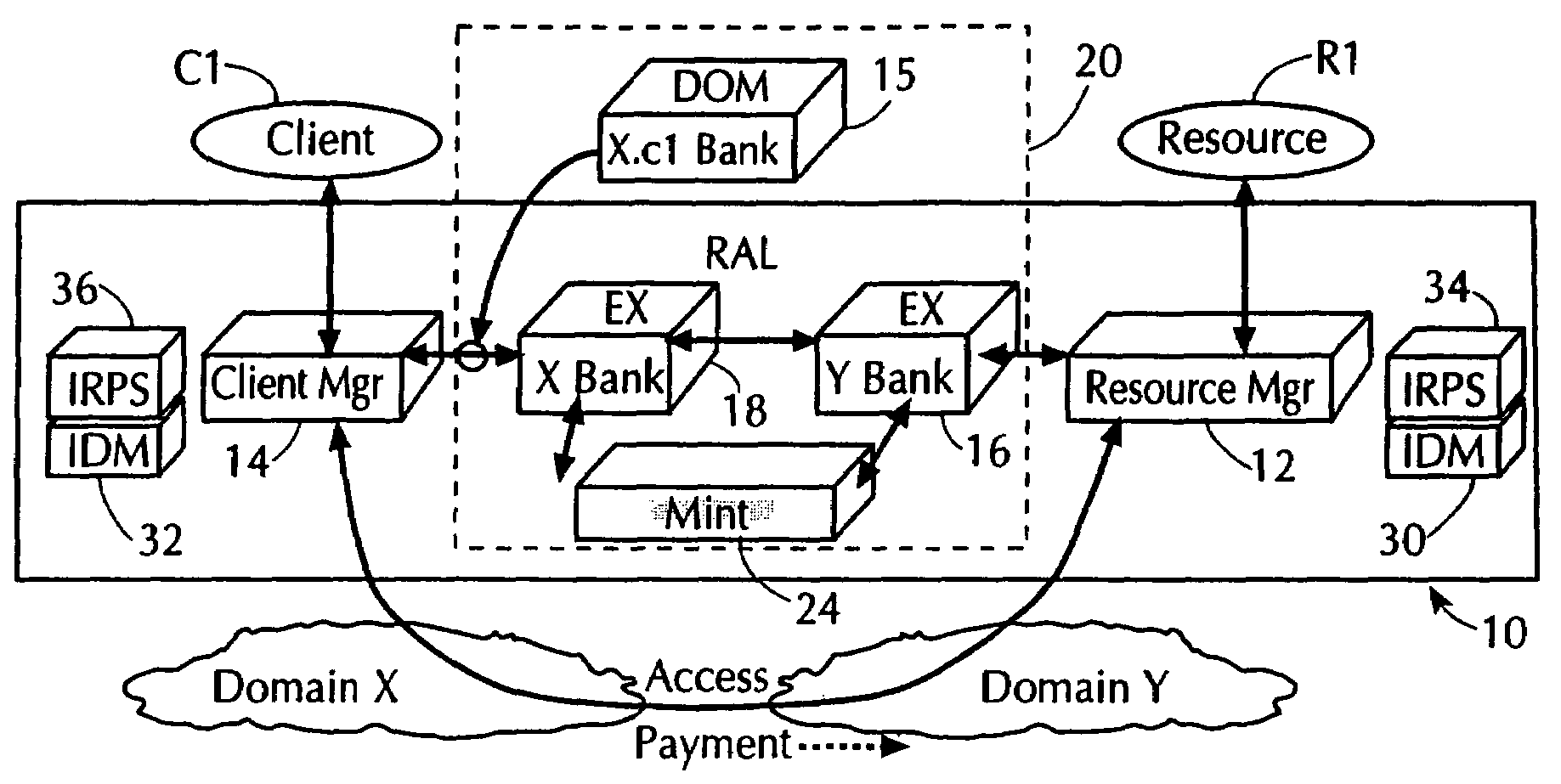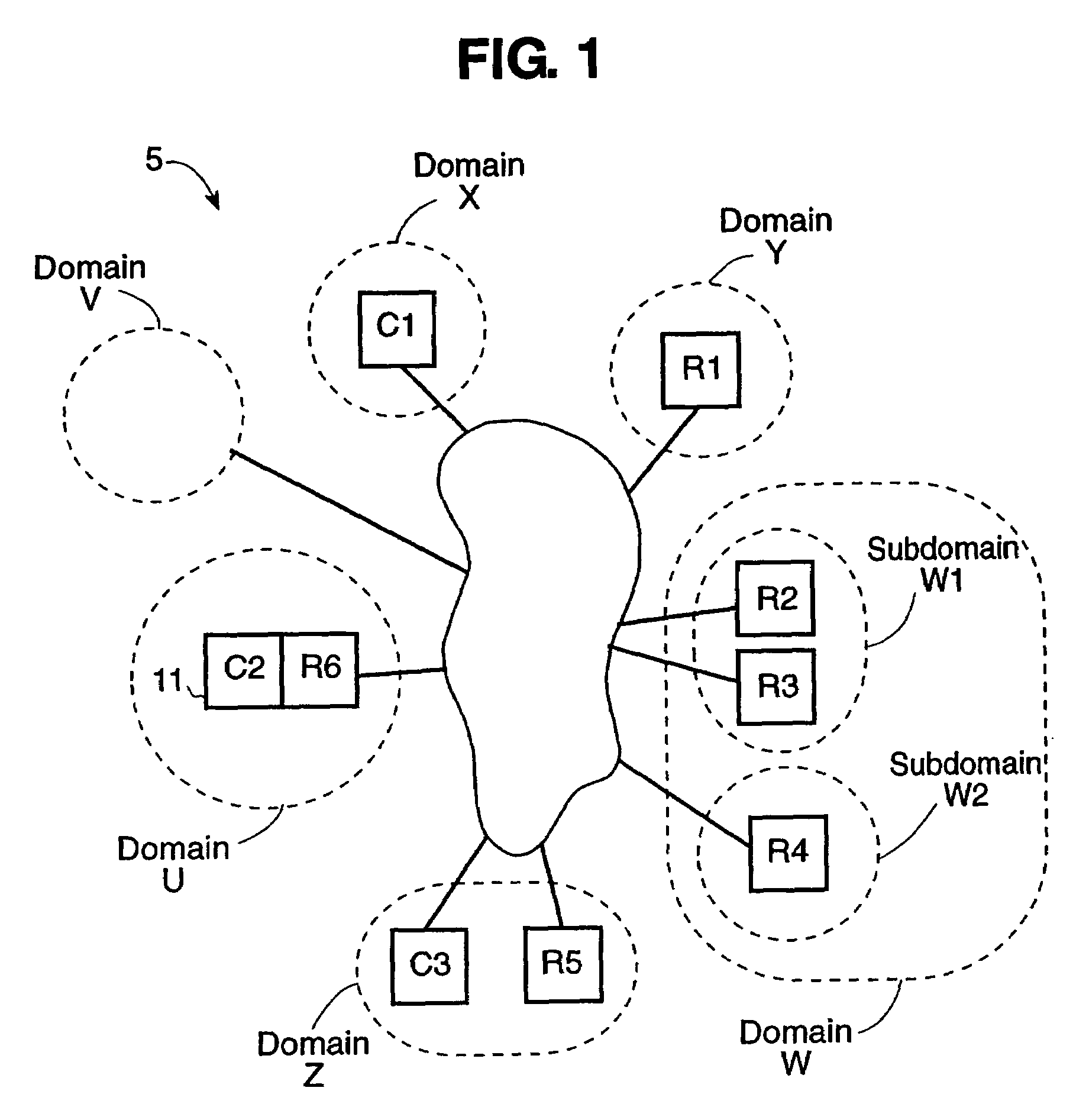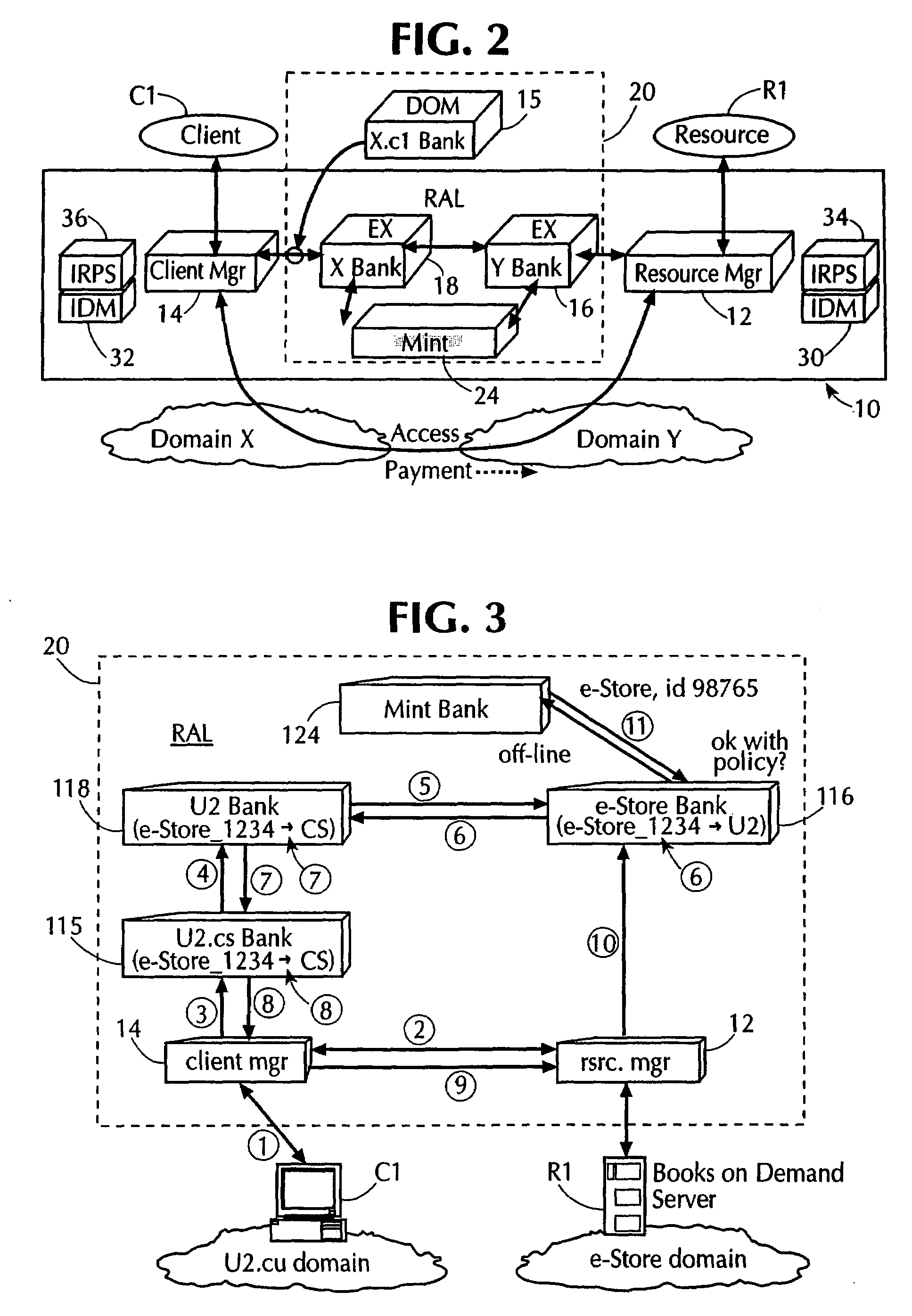Identification of an attacker in an electronic system
a technology of electronic systems and identification, applied in the field of system security, can solve the problems of increasing complexity, elusive challenge, significant disruption of services and damages, etc., and achieve the effect of enhancing network security
- Summary
- Abstract
- Description
- Claims
- Application Information
AI Technical Summary
Benefits of technology
Problems solved by technology
Method used
Image
Examples
Embodiment Construction
I. General Overview
[0078]As indicated above, the present invention describes a system in which electronic security value units (i.e, currency) are used to control access to resources in an electronic system, such as a network or a stand-alone computer. In the case of a network, components, such as clients or users, are attached to the network.
[0079]Section II below is an overview of the use of the electronic security value units, hereinafter referred to as electronic security value units, and the advantages that can be achieved by using such electronic security value units to enhance network security.
[0080]Section III, below, describes a Resource Access Layer (RAL) which is a distributed software system used to implement the electronic security value units based technique for enhancing resource security. Further, Section III includes a detailed example that show how such electronic security value units are used to enhance security in an electronic system, such as a network.
[0081]Sec...
PUM
 Login to View More
Login to View More Abstract
Description
Claims
Application Information
 Login to View More
Login to View More - R&D
- Intellectual Property
- Life Sciences
- Materials
- Tech Scout
- Unparalleled Data Quality
- Higher Quality Content
- 60% Fewer Hallucinations
Browse by: Latest US Patents, China's latest patents, Technical Efficacy Thesaurus, Application Domain, Technology Topic, Popular Technical Reports.
© 2025 PatSnap. All rights reserved.Legal|Privacy policy|Modern Slavery Act Transparency Statement|Sitemap|About US| Contact US: help@patsnap.com



